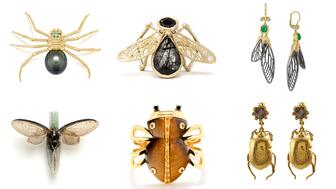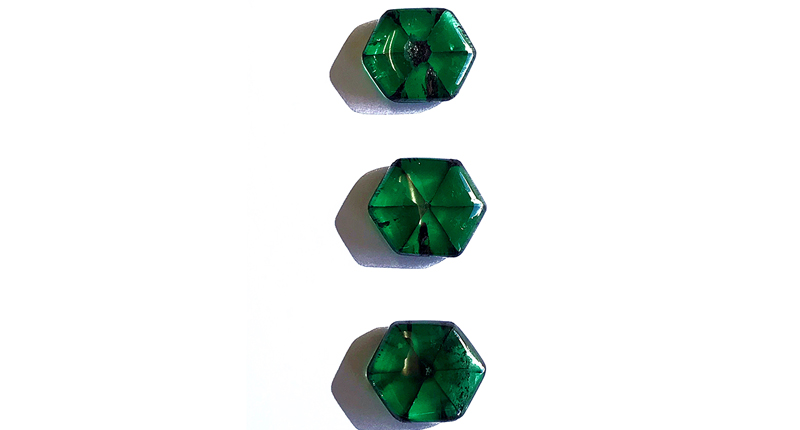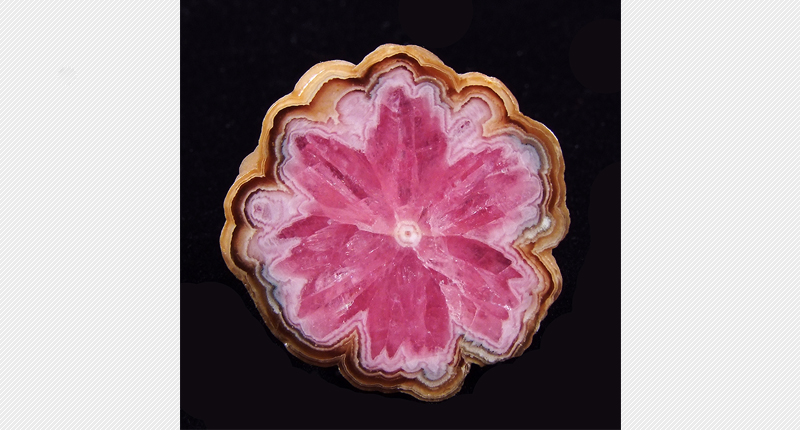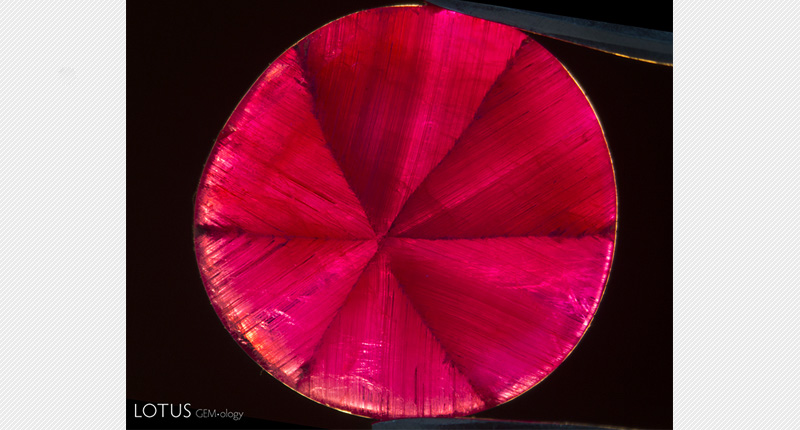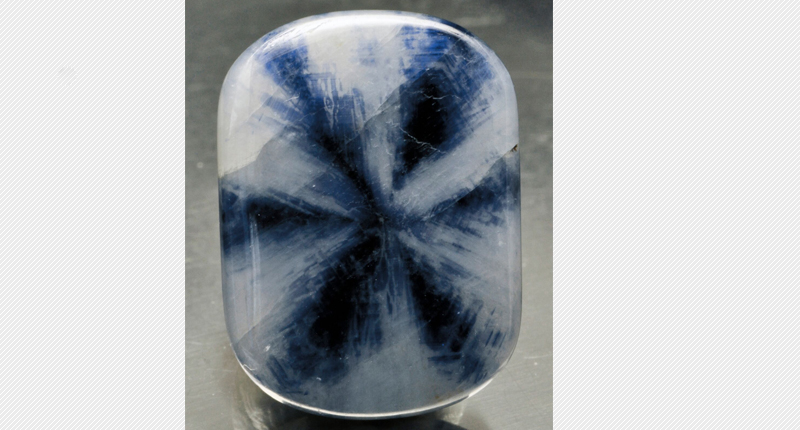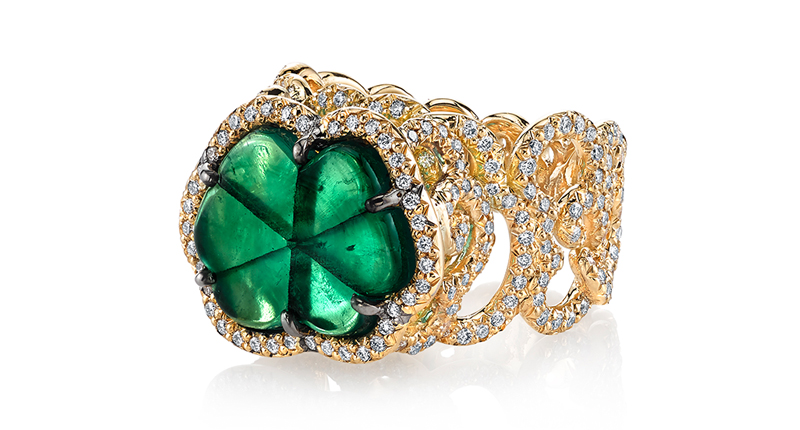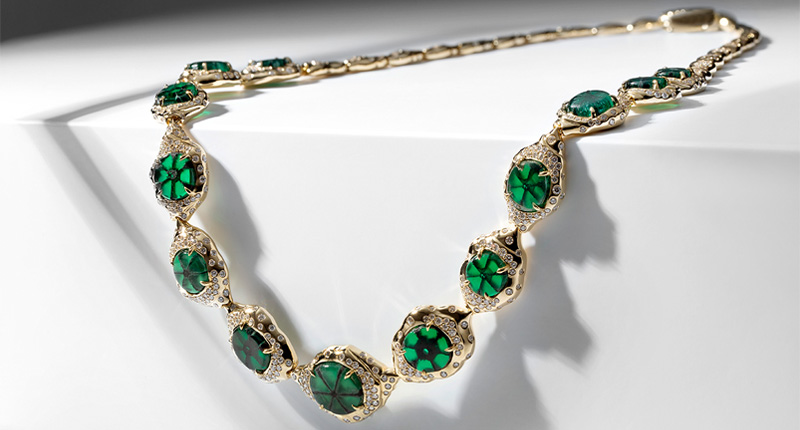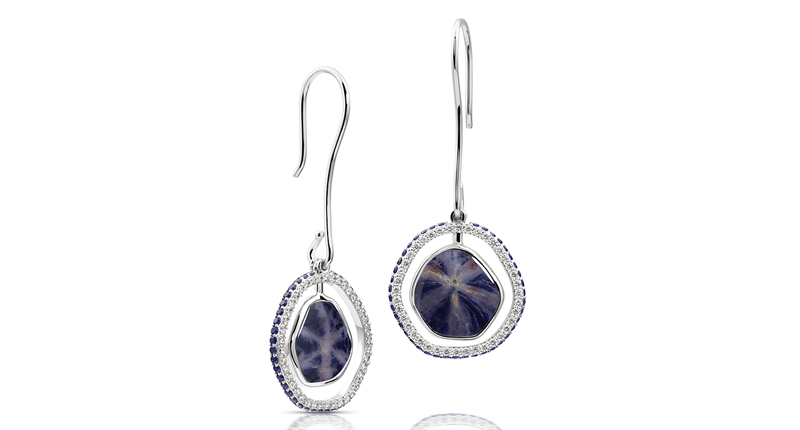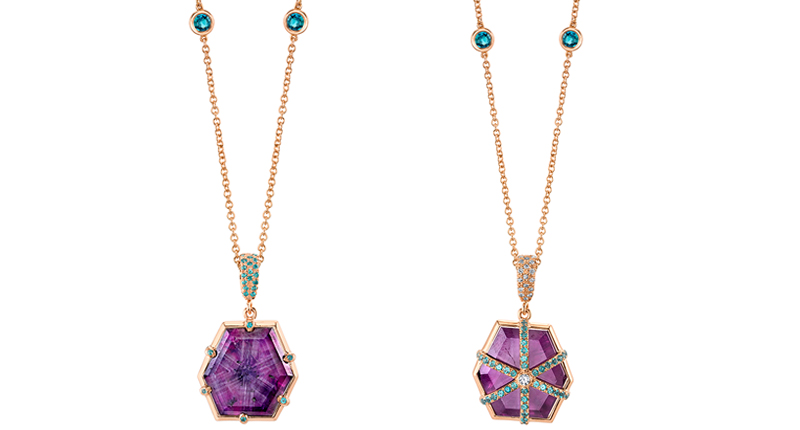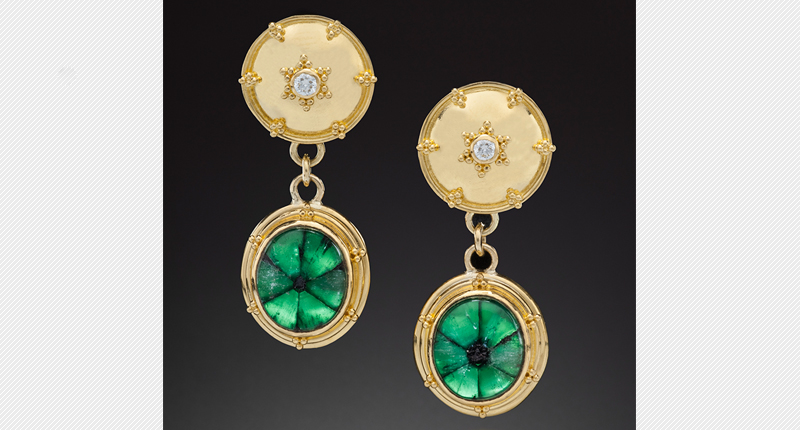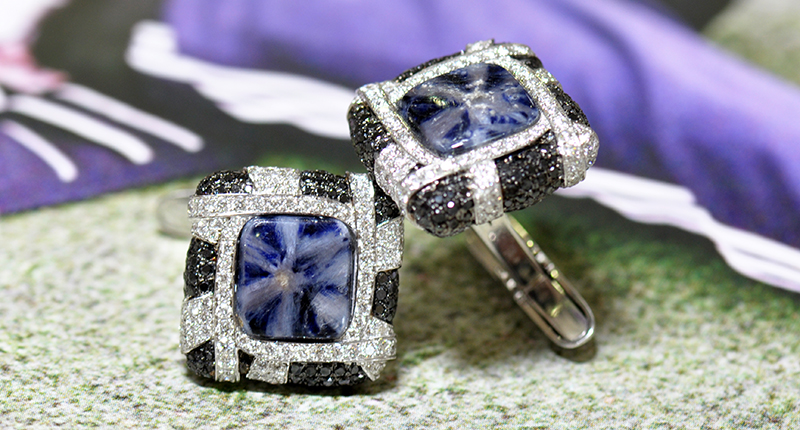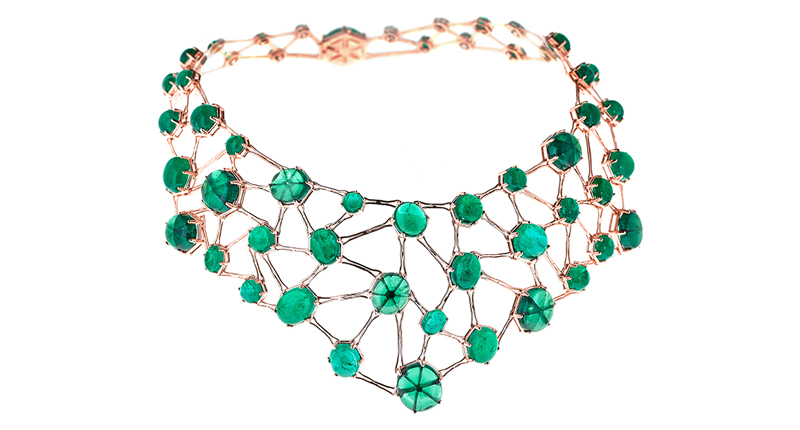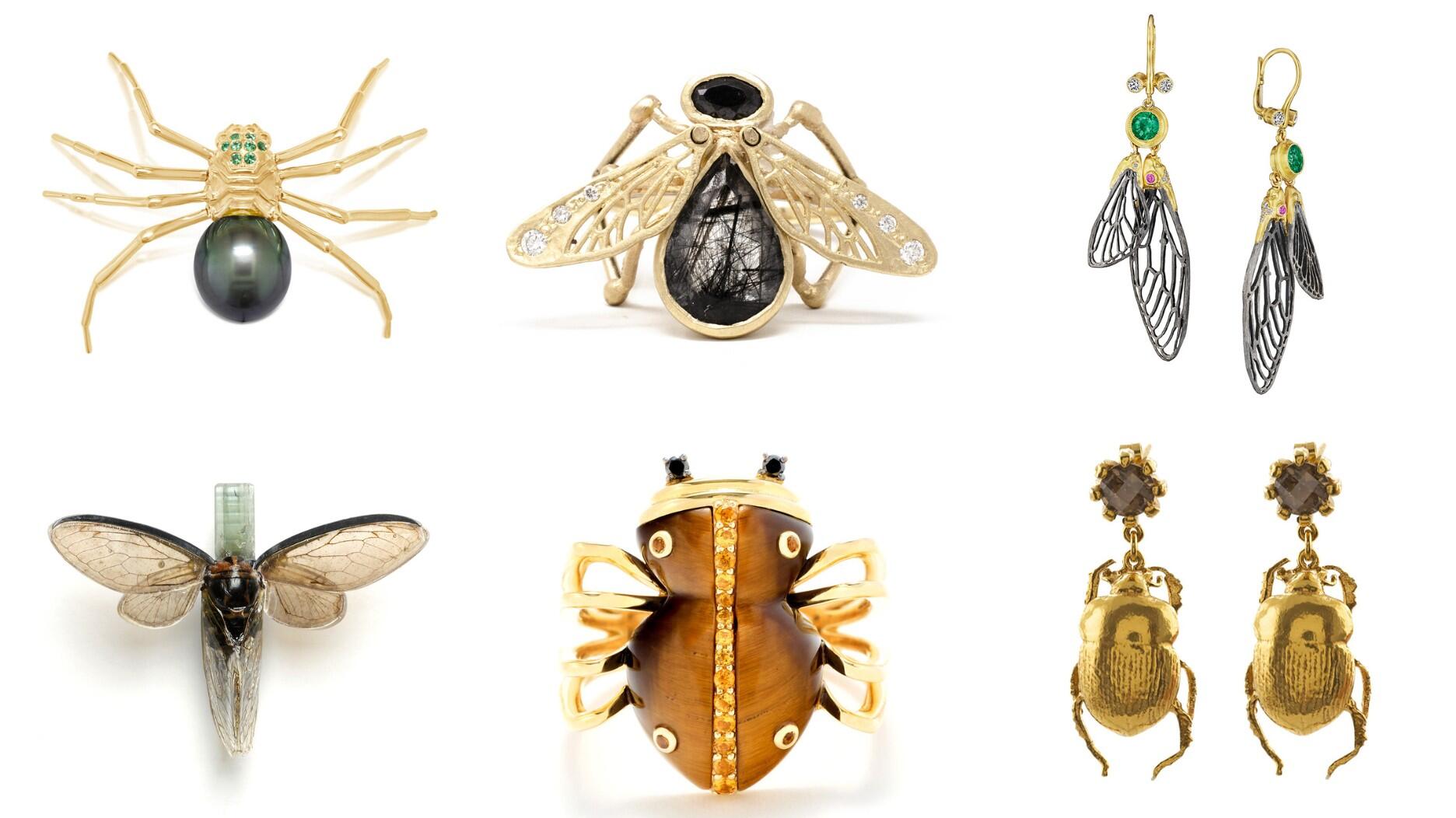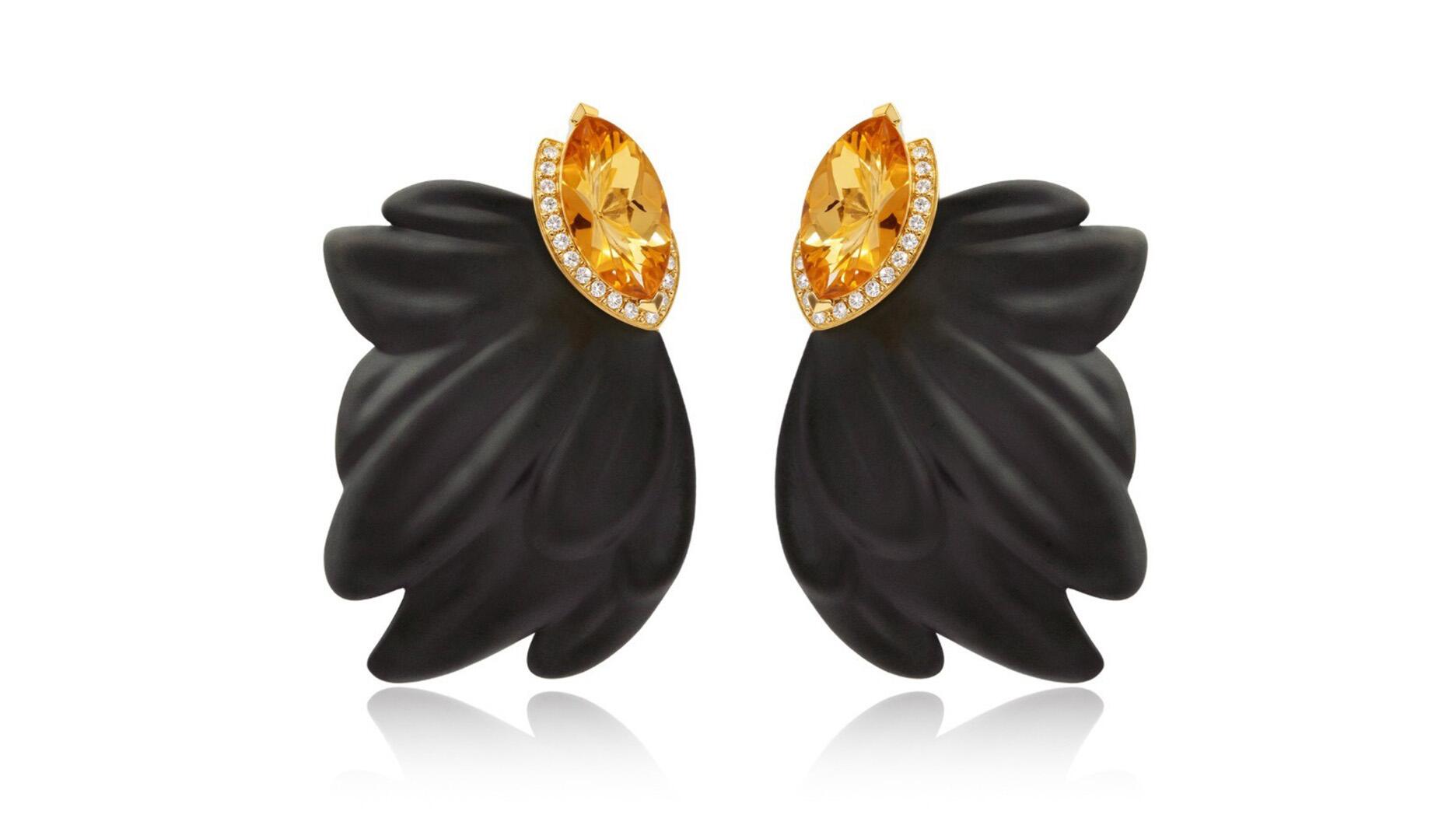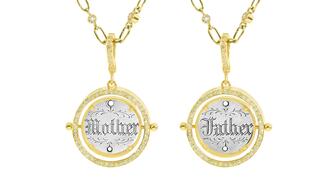This “Mother Father” spinner necklace from Heavenly Vices Fine Jewelry draws inspiration from Victorian Era jewelry.
5 Things to Know About … Trapiche Gems
Here are a handful of interesting facts about the colored stones with a pattern usually resembling a wheel.

Trapiche gemstones are a great example of this. The geometry and symmetry of the stones created by their rayed patterns are truly spectacular and valued for both their beauty and uniqueness.
Trapiche emeralds were first on the scene, at least according to written records, with the name adopted because of their resemblance to “trapiche de caña de azucar,” the Spanish name for the six-spoked cogwheel used in sugar mills.
Beyond the almost-immediate fascination trapiches spark with their beauty and rarity, there’s plenty to know about these stones, starting with these five points below.
1. Trapiche gems have equivalent crystallographic growth patterns separated by boundaries of inclusions.
According to the Gemological Institute of America’s “Gems & Gemology,” these boundaries intersect at a central point or extend from a central core, creating a pattern that, often, resembles a wheel.
Trapiche gems also are characterized by their high symmetry--which appears in a hexagonal manner, for example, for emeralds--and feature inclusions of organic matter.
2. There are a number of gemstones that can be found in trapiche variations.
The spoke patterns that define trapiche gemstones are best known in the popular green beryl, but one can also find trapiche corundum, garnet, tourmaline and chiastolite, though chiastolite only exhibits four arms, InColor said.
3. The history of (finding and studying) trapiche is long.
Or at least for emeralds, that is.
According to Gems & Gemology, Colombian trapiche emeralds were first described by French mineralogist Emile Bertrand in 1879 at a meeting for the Société Géologique de France, though they did not yet have a name.
The first known use of trapiche emeralds in jewelry is in an early-19th century gold ring by an unknown artist that was bequeathed to the Victoria & Albert Museum in London.
Trapiche rubies from Burma, meanwhile, were first documented by the GIA in 1995, according to InColor, but the stones also have been found in Guinea, Kashmir, Pakistan, Nepal, Sierra Leone and Tajikistan.
Trapiche sapphires first appeared on the gem market in early 1996, when samples were offered in Basel by a Berlin gem dealer, and have been found in Australian, Cambodia, China, France, Kenya, Madagascar, Nepal, Sri Lanka, Tanzania and more.
As with any rare gemstone, trapiches are still pretty hard to come by, goldsmith and jeweler Paul Farmer said.
But there may be an opportunity, however big, with pieces or partial trapiche stones, he said, which can make unique pieces such as butterfly wings.
He sees some opportunity in this area as more lower-quality gems come onto the market, noting that they can “make fun, inexpensive pieces,” he said.
Jeffery Bergman of Primagem said emerald trapiche continue to be the most available and in highest demand of all trapiche gems.
Trapiche rubies from Burma, meanwhile, tend to be mostly under 1-carat in size, he added, and rather dark, requiring thin slicing to get the best color and trapiche pattern, which has had the effect of restricting their use in jewelry.
Bergman also said fine trapiche sapphires from Mogok, Burma are still in high demand with very limited supply.
“Most of the material on the market is semi-translucent to opaque, and the occasional gemmy translucent example fetches several thousand dollars per carat,” he said.
He added that Vietnam has been producing some semi-translucent-to-opaque trapiche sapphires ranging in size from 5 to more than 50 carats and reasonably priced at about $50 per carat for finer pieces.
Simon Watt of gemstone dealer Mayer & Watt also said that supply hasn’t changed much, with the fine stones still hard to come by and with the bulk of demand from gem connoisseurs.
What’s more, “There’s never enough (supply) for the demand to be so great,” he said.
In fact, he hasn’t seen a resupply of trapiche sapphires in the past year.
The difference for him, though, is that he’s been marketing the material for years, and it’s paid off with an increased buzz around the gemstones.
5. Prices have increased.
The downside to the buzz he’s created, Watt said, has been a price increase; he said he’s seen prices double in the past five years for fine material.
This is not to mention the rarity of the stones keeping prices high.
Bergman also noted that prices of emerald trapiche have doubled and tripled over the past several years as well-known jewelry designers like Selim Mouzannar, Omi Prive and Erica Courtney have incorporated them into award-winning designs.
Still, Watt is hopeful prices will start leveling out, if nothing else, and notes that when he does get trapiche stones, he has rarely has trouble selling them.
“The end user is really looking for something very unique that blows their mind. Trapiches do just this because you look at them and think, ‘Nature is truly incredible, isn’t it?’”
The Latest
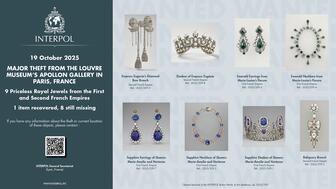
The suspects were rounded up in Paris and its suburbs on Wednesday night, but none of the stolen jewels were recovered with them.

Experts share top tips on how to encourage positive reviews and handle negative feedback.

Sponsored by the Gemological Institute of America


The suspect faces charges in the August robbery of Menashe & Sons Jewelers and is accused of committing smash and grabs at two pawn shops.
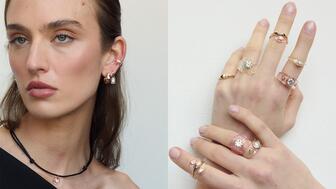
The “Lumière Fine” collection was born from designer Alison Chemla’s interest in the transformative power of light.

From sunlit whites to smoky whiskeys, introduce your clients to extraordinary diamonds in colors as unique as their love.
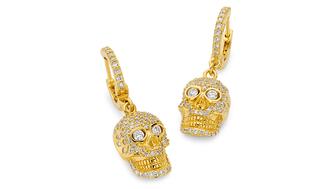
Show off your spooky side with these 12 festive jewels.

The “Brilliant & Beyond” panel coincides with the “Love & Marriage” exhibition curated by Davis Jewelers in Louisville, Kentucky.

Consumers are feeling more optimistic about their present situation while the short-term future remains a little scary.

The company, which organizes a watch show in Geneva every spring, will bring a selection of watch brands to the 2026 Couture show in Vegas.
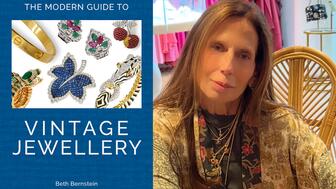
“The Modern Guide to Vintage Jewellery” follows the evolution of jewelry design from the ‘30s to the ‘80s with buying and styling advice.

Notable jewelry designers, members of the press, and retailers are up for an award at next year’s gala.

Leaders from Jewelers of America and National Jeweler discuss the gold price, tariffs, and more in this one-hour webinar.

After experiencing motherhood, growth, and loss, founder and designer Erin Sachse has created 10 irreplaceable jewels.
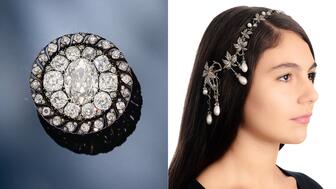
It is part of Sotheby’s “Royal & Noble Jewels” sale along with an ornate hair ornament and an old mine-cut light pink diamond ring.
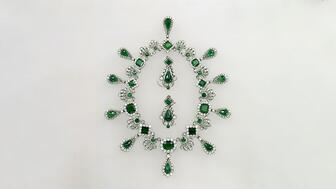
One of the individuals was apprehended at the airport as he was trying to flee the country.

The retailer, which has faced struggling sales in recent quarters, is looking to streamline its operations.

Hill Management Group will oversee, market, and produce next year’s spring show.

London-based investment firm Pemberton Asset Management acquired the auction house for an undisclosed amount.

The workshop will give attendees the chance to try out and ask questions about three different diamond verification instruments.
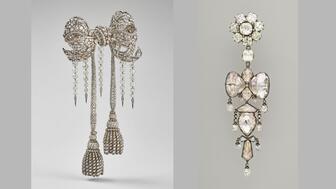
The footage shows two of the jewelry heist suspects descending from the second floor of the museum and then escaping via scooter.
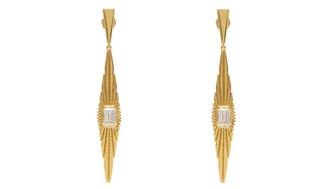
Founder and designer Rosanna Fiedler looked to a vintage Cartier clutch when designing the sunlight-inspired drop earrings.
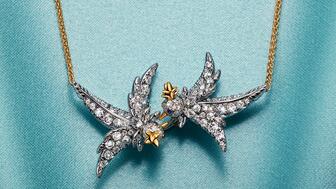
The luxury conglomerates faced a challenging Q3 amid geopolitical and economic tensions.

The struggling diamond mining company, which owns the historic Cullinan mine, has launched a rights issue to raise about $25 million.

The book details the journey of watches as symbols of hard-earned success in hip-hop for artists like 2Pac, Jay-Z, and more.




